EPDS III: Demonstrating bioferts for improved profitability
| Project start date: | 03 January 2024 |
| Project end date: | 31 October 2028 |
| Project status: | In progress |
| Relevant regions: | Southern Australia, Victoria |
| Site location: | West Gippsland |
Summary
In response to rising fertiliser costs and growing environmental concerns, farmers in the region are increasingly exploring alternatives to imported synthetic fertilisers. The 2022 fertiliser price surge—driven by global supply disruptions—highlighted the vulnerability of traditional input systems. Biofertilisers (bioferts) have since gained traction as a low-cost, locally sourced solution that can be produced on-farm or through cooperative hubs. These natural fertilisers offer immediate nutrient availability, reduce application rates, and significantly lower farm emissions, making them an attractive option for sustainable beef production.
This project will establish three on-farm demonstration sites to showcase the creation, application, and outcomes of using bioferts. Each site will compare traditional synthetic fertiliser practices with biofert treatments tailored to soil and plant analysis. Key metrics such as pasture yield, nutritional content, liveweight gain projections, emissions intensity, and cost-effectiveness will be monitored. By sharing results with the wider farming community, the project aims to empower farmers with practical data and insights, encouraging broader adoption of bioferts for improved profitability and environmental performance.
Objectives
Aim:
To provide an opportunity for farmers to learn more about bioferts with x3 on-farm demonstrations showcasing the creation, application and outcomes of using bioferts on farms. This will provide farmers with information and data that they can then use to consider the appropriateness of the innovation on their own farms.
Objectives:
- Match biofert application on each property to soil and plant analysis.
- Measure efficacy of bioferts on pasture; yield, utilisation, nutrition and mineral content.
- Only use readily available ingredients that can be easily sourced on farm or at farm supply stores. i.e. manures, molasses, humic products, sulphates, low biuret urea.
- Model projected liveweight gain using CSIRO GrazFeed program
- Calculate projected emissions intensity using Grazfeed modelling along with pasture nutrition and the MLA carbon emissions calculators.
- Monitor costs to make and apply bioferts and compare with normal practice.
- Share results with group members and other farmers


